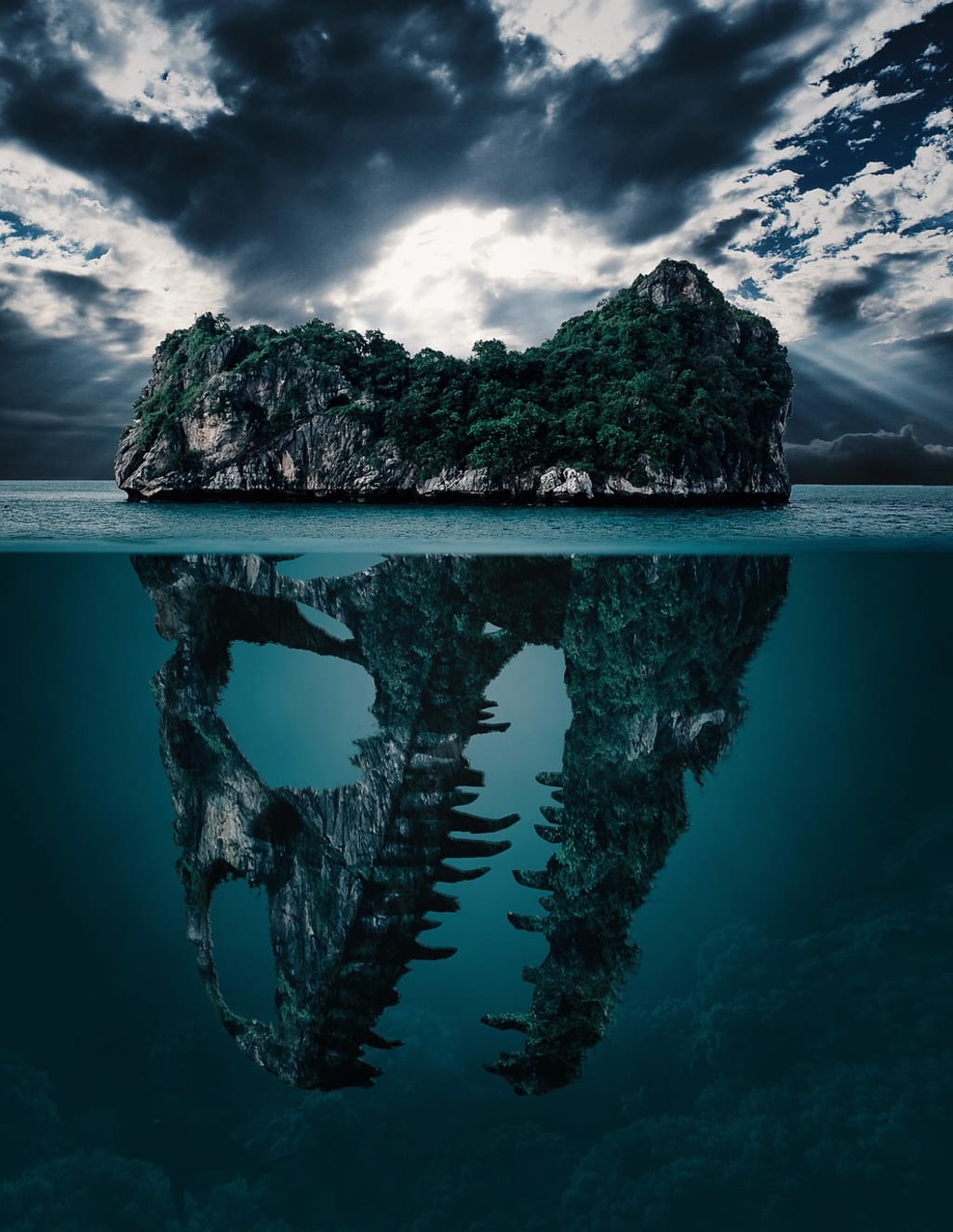The Ocean is Way Deeper Than You Think
way too deep than we could imagine

In fact, the ocean is very deep, much deeper than we know. If you were to take all the land on top of all the countries and islands in the world, and fill the depths of the ocean with that land, the entire world would be covered with 2 miles of ocean. But three-quarters of our planet is covered in water, and it's more than two miles deep. Let's start with a definition of scale. This sign is about the size of an average person. This small dot is about the same size as a large one. These are the dimensions of the largest ship ever built, HMS Knock Nevis. With that in mind, let's start diving underwater and see what we can find. The first point is 40 meters below the surface, which is the maximum depth for scuba diving. A little further down, at a depth of 93 meters, the wreck of the Lusitania can be seen, which is interesting because the Lusitania itself was 240 meters long, meaning it sank in deeper water than its shallow length. So, if the boat stops at the stern or the bow, it is stuck out of the water. At over 100 meters deep, diving can be fatal if you are not careful due to hypothermia. But that didn't stop a man named Herbert Nitsch from setting a free diving world record at a depth of 214 meters. This man swam this height in one breath. But a little further down, at a depth of 332 meters, we have the diving world record held by another man named Ahmed Gabr. If he swims another 111 meters, he will reach the height of the Empire State Building if submerged in water. A little further, 500 meters below sea level, is the depth of the blue whale's dive. At a height of 535 meters, we can see how deep the emperor penguins dive. This is why the hydraulic capacity must be increased. High below the surface, the water pressure on a person or penguin is the same as that of a polar bear standing a quarter of the height. Thus, the height of the Burj Khalifa in Dubai, the tallest building in the world, is 830 meters below. Once we reach 1000 meters below the surface, we begin to enter the horror zone. Light from the surface could not reach beyond this point, so the entire sea below was shrouded in darkness. Also, the water pressure you're facing right now is the same as if you were standing on the surface of Venus, which means you'll die quickly. If you haven't died of water pressure, you'll also encounter a giant squid in this level. At a depth of 1,280 meters we reached the deepest dive for leatherback turtles. Further down, if we were underwater, we would reach the deepest point of the Grand Canyon at a height of 1,828 meters. At a depth of 2,000 meters, we begin to encounter some of the most terrifying animals of the sea, such as the terrifying Black Dragon, a carnivorous animal whose stomach does not allow the light to enter. Of course, since we're still in the dark underwater, the only way you can see this thing is with a flashlight. A little further down, at a depth of 2,250 meters, we reach the maximum depth that sperm whales can dive.A giant octopus is also very scary. Humpback whales often have puncture marks and scars on their bodies, possibly from battles with giant squid at great depths. The octopus itself can grow up to 14 meters long and weigh up to 750 kilograms, with eyes the size of a dinner plate and a sharp sickle in the middle of its pants. So, good luck to you. Below, at a depth of 3,800 meters, we can see the wreck of the Titanic. After 4000 meters we started entering the deep sea area. The water pressure here can reach 11,000 pounds per square inch. These depths are home to many strange, almost alien creatures, such as finfish, anglerfish, and viperfish. The ocean is about 4,267 meters deep when you reach the sea floor. But some parts of the ocean are much deeper than that. The wreck of the battleship Bismarck, sunk in World War II, is 4,791 meters high. The Hadal Zone begins at a depth of 6,000 meters and is named after Hades, the underworld. The water pressure at this depth can be 1,100 times greater than you think when you return to the surface, which is like a giant elephant weighing a postage stamp, or a person carrying the weight of jumbo jets 50 Boeing 747. deep, without external protection, you can destroy them quickly. But life still exists here in different ways. At 6,500 meters we reached the depths of the DSV Alvin, the famous research vessel that helped discover the Titanic. Further down, 8,848 meters below the surface, we have reached the height of Mount Everest, if we turned it upside down and placed it underwater. One step further and we reach the depth of 10,898 meters reached by James Cameron during the Deepsea Challenger mission 2012. The deepest part of the ocean that has not been reached by humans 1960, when two men Don Walsh and Jacques Piccard used a [? Trieste? ] submarine. It took five hours to cross the ocean to reach that depth. It only took about 20 minutes before the window broke and it started to go back up. A little lower, at 10,972 meters above sea level, it reaches the average height of a commercial airliner. So, if you've ever looked out the window and looked down at the ground while flying, you'll know exactly how deep the abyss is that we're facing right now. Finally, at 10,994 meters, we have reached the sea floor known as the Challenger Deep, located on this map 300 kilometers southwest of Guam. However, it is believed that there are almost always parts of the ocean deeper than this that have yet to be discovered. Serena Deep, which is 10,732 meters deep, was only discovered in 1997, making it the second deepest known point in the ocean. It is estimated that only 5% of the ocean floor has been accurately mapped and the remaining 95% is a mystery. It may take some time to discover the deep parts of the ocean.
About the Creator
Rowan Sharkawy
someone who love to know anything & share it with every one
welcome to my profile






Comments
There are no comments for this story
Be the first to respond and start the conversation.